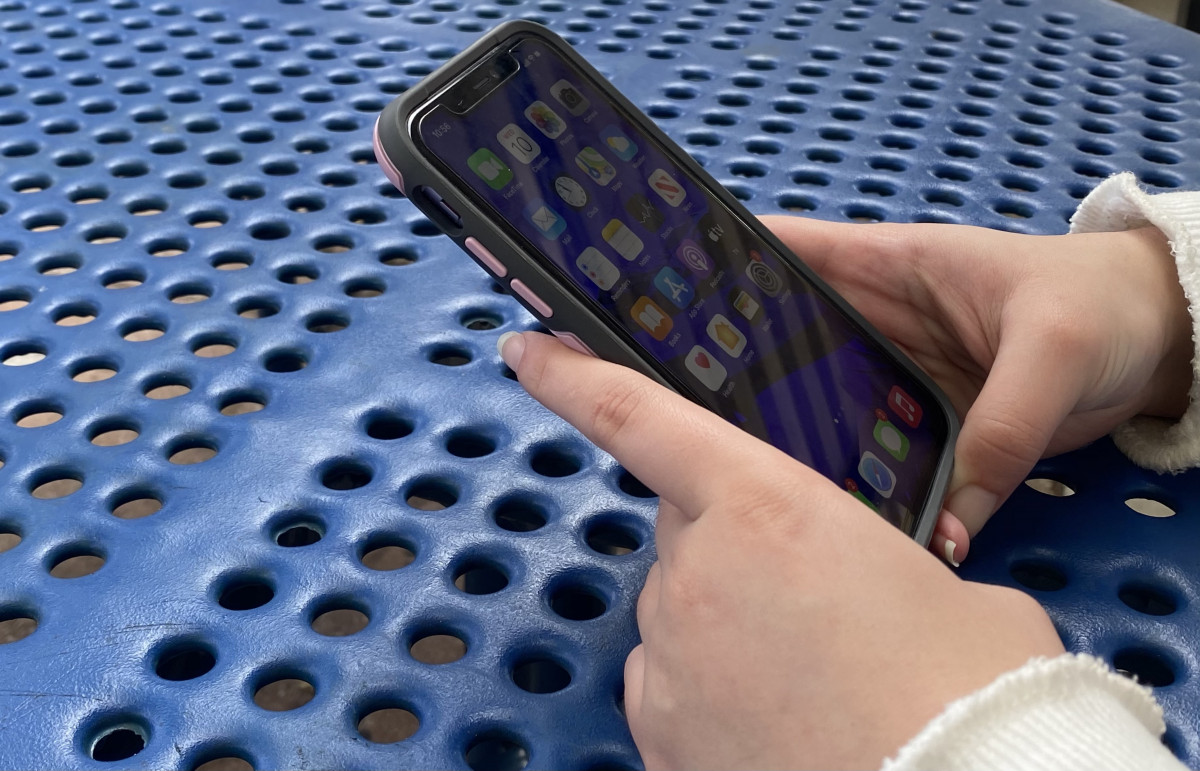With social media trends on the rise, many teenagers are being absorbed in the almost never-ending spiral of cell phone addiction. Teens are seen isolated from their families and entering a separate world of texting and online videos, leading to academic, health and social problems, as well as missed opportunities.
The screen times of high schoolers are skyrocketing as more students are signing up to various social media sites.
“I am in the second year as Assistant Principal at Naples High School, but cell phone usage through my time in education (over a decade) has increased significantly with the introduction of vast social media platforms,” assistant principal Eric Maya said.
Unfortunately, online apps are specifically designed in ways to keep users glued to their screens for a prolonged period of time.
Social media apps causing addiction
Social media apps, like TikTok and Snapchat, intentionally implement features to keep users interested in their network. This often leads to an addiction, which is becoming increasingly common in young people.
Some of these methods include infinite scrolling and streaks, where users are encouraged to maintain a high streak number with their friends. If the app is not used everyday, the streak stops and has to be started over. Psychologists from the Addiction Center organization have warned that social media activates dopamine-producing neurons, causing people to associate cell phone use with a positive experience.
Most teens will agree that perhaps the most addicting app is TikTok, a popular video-sharing network. One of the main strategies that TikTok uses to keep teens hooked for hours on end is keeping their videos short and on auto-play. Users continue scrolling through the unlimited list of videos, which are curated based on their preferences.
Other popular sites include YouTube, music streaming services and reading apps.
“I probably spend the most time on Pinterest and Sora, a reading app like Overdrive,” sophomore McKnight Welzbacher said.
Link to academic performance
Due to companies taking advantage of technology to stimulate obsessions for financial gain, many teenagers are neglecting school assignments and substituting class time with texting. As a result, some students are seeing their grades drop, failing to notice the connection between phone overuse and academic performance.
“Many students have multiple social media accounts that they are checking/updating on a regular basis which does cause a decrease in focus while at school,” Maya said.
School administrators are trying to solve this issue by setting up guidelines as to when students may access their phones during the school day.
“Student phone usage is allowed during passing time, as well as at lunch time,” Maya said. “However, in class, it is the teacher’s discretion as to how phones are used. Some teachers allow students to use the phone for academic purposes, but if phones become an impediment in the learning process, they may ask the student for their phone and bring it to the office for parent pick-up.”
If phones obstruct student attention, it is very likely for their education to be affected.
“In terms of cell phone use impacting education, it depends on each individual and if they choose to pay attention to their phone instead of the lesson and instruction,” assistant principal Amanda Holderfield said.
Additionally, the information overload that is available online is causing students to use the Internet as a source for their knowledge, furthering the impact on school performance. Students might believe that using the Internet for answers to homework assignments will benefit them, but it is quite the contrary, since this will hinder their ability to understand the material on a long-term basis.
Furthermore, when it comes to final tests, students won’t have their phones with them, so building on the ability to complete assignments independently will help create a strong foundation when it comes to test taking.
“Increasing amounts of media platforms allow for students to access large amounts of information,” Maya said. “Many students are prone to rely on the web/social media for their information and this can have a very large, negative impact, on their educational performance at school.”
To combat this issue, some students are setting up ways to break the cycle of cell phone usage, so they can focus mainly on their assignments.
“My phone definitely distracts me from completing school work,” Welzbacher said. “I have had to develop a system in which I keep my phone off and in another room until my assignments are complete, [or] else I will procrastinate further.”
Many believe that student cell phone usage has never been this high and think that social media definitely is to blame.
“There has been an increase in cell phone usage over the years as social media has gained popularity,” Holderfield said. “However, I think teachers have done an excellent job of establishing clear rules and consequences for the devices in their classroom in order to alleviate issues.”
Mental health problems
Not only does excessive social media use contribute to poor grades, an alarming number of teens are missing out on social interactions, which may lead to mental health problems and other concerns.
“I think a long screen time makes students’ attention spans shorter,” senior Lily Poorman said. “It’s definitely a negative thing.”
Many high schoolers are also using technology as a coping mechanism for dealing with stress.
“Sometimes, I do feel that I spend too much time on my phone, especially when I am stressed and want a distraction.” Welzbacher said. “Unfortunately a ‘distraction’ becomes an excessive use of technology, that leads to, ultimately, more stress because I have failed to complete tasks.”
Besides the regular consequences like losing time, excess social media may cause more serious problems in some teens.
According to the American Psychological Association, social media usage may be linked to anxiety, depression and loneliness. However, these psychological disorders do not appear in all teens who are highly active online. Individual characteristics, like self-esteem, whether they are prone to emotional problems, at-home support and how they engage with the Internet are all variables that determine whether someone will have mental problems from social media.
Being exposed to negative content online, such as substance abuse, is often related to poor consequences due to peer pressure. It is important for teens to surround themselves with positive and uplifting posts to prevent them from stepping on the road to depression and negative thoughts.
Middle school vs. high school
Cell phone usage also greatly varies between middle and high schoolers. Although these students are both teenagers, the amount and type of usage are very different. Some even have stricter technology rules at home, like having their phone taken away on the weekends.
“When I do get my phone on the weekdays to research things, it does take my attention away, but it doesn’t prevent me from doing my work,” seventh grader Balint Varsanyi said.
However, a large majority of high school students get sidetracked due to constant notifications.
Additionally, the websites visited are also different for younger teens. YouTube and video games are commonly used, but also Spotify. High schoolers, on the other hand, spend most of their time on social networking sites.
“I definitely spend the most time on social media apps like TikTok and Instagram,” Poorman said.
Constant checking of phones can cause both age groups to ignore other activities, like exercising, spending time outdoors or reading.
“Although cell phone usage can be limited and used well, most teens don’t just rely on their phone but it’s become a habit to distract themselves with it for hours, instead of doing productive things,” Varsanyi said.
Cutting down on screen time
Despite the flood of notifications that high schoolers get on their phones, it is still very possible to break free from the habit of continual usage.
Keeping a schedule to manage how often phones are checked has been found to be effective. Some other strategies include reducing the amount of push notifications, setting up limits in the “Screen time” feature available on all iPhones, keeping devices out of reach during the night and deleting time-consuming apps.
Our phones make our lives much more convenient and provide many benefits, but it is equally important to know when to turn the power off.
“Cell phone usage is a big problem in our generation,” Welzbacher said. “It is inhibiting us in certain aspects of society and social interactions. But at the same time it opens new doors to information, people, and events, we may never have heard about. I think that everything would be a bit better if we just used it all in moderation, but unfortunately that is not the case these days.”






